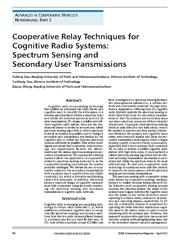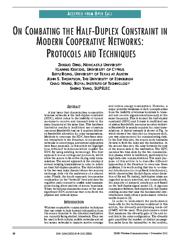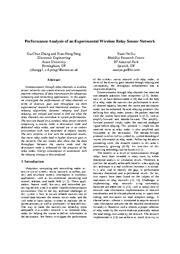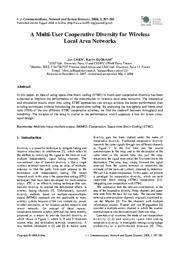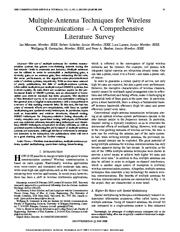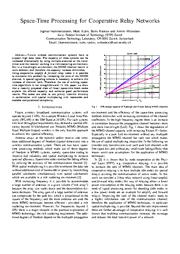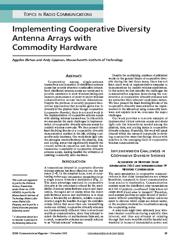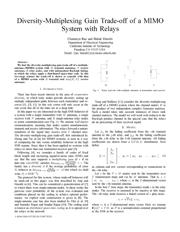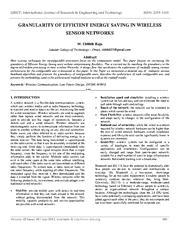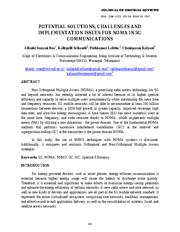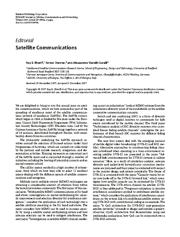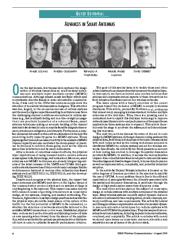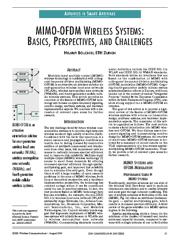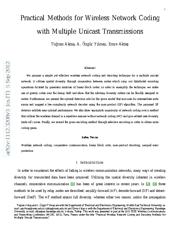Diversity-Multiplexing Gain Trade-off of a MIMO System with Relays
Chaitanya Rao, Babak Hassibi
2007
2007 IEEE Information Theory Workshop on Information Theory for Wireless Networks
We find the diversity-multiplexing gain trade-off of a multipleantenna (MIMO) system with M transmit antennas, N receive X antennas, R relay nodes, and with independent Rayleigh fading, in which the relays ...
In this : two-stage scheme the trade-off is shown to coincide with that X of a MIMO system with R transmit and min{M, N} receive antennas. ...
Email: {rao, hassibi}@systems.caltech.edu Abstract-We find the diversity-multiplexing gain trade-off of a multipleantenna (MIMO) system with M transmit antennas, N receive X antennas, R relay nodes, and ...
doi:10.1109/itwitwn.2007.4318029
dblp:conf/itw/RaoH07
fatcat:aw4iphjicjdpvgihpdx6n6324y

